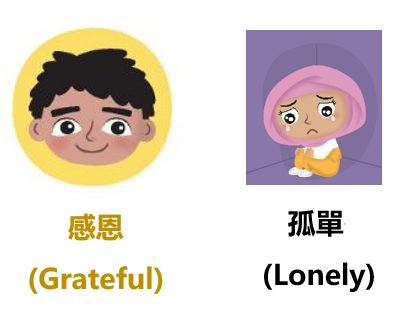Introduction
In Hong Kong, NCS residents, excluding foreign domestic helpers, have increased from 3.6% of the total population in 2016 to 4.2% in 2021. Amongst them, the number of South Asians, including Filipino, Indonesian, Indian, Nepalese, Pakistani, Thai, Sri-Lankan, and Bangladeshi, has kept rising, from 1.1% of the total population in 2016 to 2% in 2021 (Census and Statistics Department, 2018 and 2022).
South Asians' SES has been relatively low in Hong Kong compared to other NCS residents. In 2016, the poverty rate of South Asian residents was 25.7%, which was higher than the poverty rate of the whole population. They were mainly engaged in lower-skilled jobs with lower monthly income (Census and Statistics Department, 2018) and lived in low SES families. A possible speculation is that family SES has impacted children's cognitive and language skill development. Parents with low SES were less likely to guide children when learning a language (Fung and Chung, 2020), and it was more significant when children learned a foreign language (Chung et al., 2017). Studies also revealed that the language barrier might hinder their academic achievement and employability (Equal Opportunities Commission, 2019; Oxfam Hong Kong et al., 2019; Hong Kong Unison, 2021). More than four-fifths of South Asians could not write Chinese even though their younger generation was locally born (Legislative Council Secretariat, 2018). South Asian youth has remained to have limited educational attainment. The gap between South Asian students and the overall student population in studying full-time degree courses in Hong Kong educational institutions widened, from 8.2% in 2001 to 12.8% in 2016 (Legislative Council Secretariat, 2018). Their families' SES has trapped them in the poverty cycle.
In 2021, around 58,000 ethnically non-Chinese students studied in kindergartens, primary, and secondary schools in Hong Kong, and 40% were South Asians (Census and Statistics Department, 2022). Many of them started having difficulties in school adaptation, particularly in Chinese learning, when they were in kindergartens. In a study of NCS kindergarten children learning Chinese by Oxfam Hong Kong et al. (2019), students were found to have difficulty comprehending because of their low Chinese proficiency. The lack of a Chinese language environment for NCS students made it difficult to learn the language. They tended to have difficulties in learning Chinese because of lacking support given by schools, and it is even criticized that their learning needs were overlooked (Equal Opportunity Commission, 2019; Hong Kong Unison, 2019).
This article reviews challenges schools have encountered in supporting NCS children, especially those studying in the local kindergartens. We propose that teaching NCS children in kindergartens through a culturally responsive approach enables the schools to cater to the needs of both NCS and Chinese-speaking children. The article suggests two aspects, including professional development and curriculum planning, and focuses on promoting learning and teaching Chinese and social-emotional skills.
Professional Development
Many teachers did not receive relevant professional training, and cultural diversity in classrooms became challenging. A review report by Audit Commission (2021) found that Education Bureau did not set any training requirements for primary schools, secondary schools, and special schools on teaching NCS students. There was also no such requirement for kindergartens. Most kindergarten teachers lacked professional knowledge and skills in supporting NCS children's learning. A recent study showed that compared to teachers from kindergartens with high concentrations of NCS children, teachers from those with low concentrations were less able to address the diverse needs of these children or incorporate multicultural elements into curriculum and teaching strategies (Ng et al., 2021). Teachers also found it challenging to cater to the different learning needs of NCS and Chinese-speaking children in classrooms. Lacking professional training in teaching culturally and linguistically diverse children was thus blamed.
Culturally responsive professional development equips teachers with relevant skills and knowledge in supporting NCS children in classrooms. Culturally responsive teaching strategies shifted the emphasis from assimilation to mutual communication between cultures (Ng et al., 2019). After receiving professional development programs, teachers became more accommodating and emphatic toward NCS children and were more capable of developing appropriate teaching strategies for NCS children (Ng et al., 2019).
Culturally responsive education is intended to empower children intellectually, socially, emotionally, and politically and strengthen their cultural competency and critical thinking ability (Ladson-Billings, 1994). When culturally responsive teaching was used in classrooms, children found themselves being included and valued whatever cultural background they had. It also benefited children's social-emotional development and enhanced their intellectual capacity (Hammond, 2015). Thus, culture could be viewed as a strength but not a burden in learning and teaching (Gay, 2010). To align with culturally responsive education, in professional development, it is imperative to promote using a child-centered approach to teaching and highlight the significance of cultural influences on children's early learning and development (Chung et al., 2020; Liew et al., 2022).
To integrate culturally responsive education with professional development, schools are encouraged to regularly organize training sessions for teachers to raise their awareness of cultural diversity and enhance their capacities to promote culturally responsive education. Teachers are encouraged to share good practices with their peers in teaching NCS children. Evaluation of these sessions is encouraged to be conducted regularly. In addition, the schools can enable teachers to join relevant professional training sessions offered by external organizations such as the government, universities, and NGOs. They are also well informed of the information.
Curriculum Planning
One of the important aspects of culturally responsive teaching is curriculum planning. Curriculum planning involves curriculum design and teaching planning. Good practices in curriculum planning in alignment with culturally responsive education for schools and teachers are listed below:
Curriculum Design and Teaching PlanningAt School Level:
- Schools set up various real-life themes such as personal hygiene, festivals, and transportation for the curriculum. For example, for the theme of New Year, the curriculum may focus on how people of diverse cultural backgrounds celebrate New Year. Children can learn the traditions, legends, food, and celebration activities of different cultures. Teachers design relevant learning activities that cultivate children's positive attitudes toward cultural diversity.
- Chinese language ability amongst NCS children is diverse, and thus relevant teaching materials are tiered. Storybooks, for example, are commonly used in teaching. They are tiered in terms of the complexity of their syntax in Chinese. Level one consists of simple and short sentences. Level two comprises sentences with rich content. Level three adopts more complicated and long sentences.
- The schools set up a culturally responsive environment in light of the abilities, interests, and needs of NCS children. Culturally responsive teaching resources such as play-sets and materials appropriate to NCS children are available. The schools can prepare storybooks about cultural diversity to raise children's interest. For example, in the storybook, The Day of Panda 'Dousha', respect and acceptance are the main thread of the story. Children may be aware of differences amongst themselves, but prejudice and "we-they" segregation are discouraged (Lam, 2022).
- The schools provide a guideline to teachers for developing teaching plans to support NCS children in Chinese learning and social-emotional learning. The teaching objectives, learning focus, and assessment are coherent and align with culturally responsive education.
- The schools encourage collaboration among teachers in teaching NCS children. Teachers, expert teachers, and multicultural teaching assistants are highly motivated to participate in developing culturally responsive education in the schools.
- A mechanism for curriculum review is set in the schools. Teachers' peer observations, samples of NCS children's work, NCS children's Chinese learning experience, and their social-emotional learning experience are reviewed every term. Feedback and suggestions are given to teachers, and some follow-up actions are taken in response to the review findings.
At Teacher Level:
- Teachers are able to use relevant knowledge and skills of culturally responsive teaching in schools. They reflect on their teaching and share them with their peers regularly.
- Teachers integrate a child-centered approach and a culturally responsive approach with teaching strategies. The child-centered approach refers to planning of teaching in response to the needs, interests, and abilities of children. Using children's funds of knowledge in learning and teaching activities could raise children's interest, motivate them to learn, and even improve their performance. Incorporating children's living experience into learning and teaching is a process of recognition (Llopart & Esteban-Guitart, 2018). For example, making 'Rangoli,' one of the Indian folk arts, can be adopted as a learning and teaching activity which helps build up Indian children's confidence in sharing their culture with classmates.
- Teachers are culturally sensitive and understand NCS children's needs and feelings. They can communicate with NCS children and give clear instructions to them. They ask open-ended questions and encourage them to share their experiences and views.
- Teachers give children sufficient time to solve problems independently and intervene appropriately.
- Teachers regularly review the effectiveness of teaching. They keep high expectations of all children including NCS children, in their Chinese and social-emotional learning. Praises are given to those who improve.
- Teachers utilize features of different cultures to design learning activities for effectively engaging NCS children in learning Chinese and social-emotional skills. Teaching resources are culturally responsive and kept updated. For example, picture cards with associated Chinese vocabulary help children identify emotions and express them in Chinese. The design of these pictures takes care of children with diverse cultural backgrounds.*1

Finger puppets are often used for 'pretend play' which can facilitate children to share their experience and feeling. The puppets are designed with cultural characteristics. For example, the below puppets are Filipino children and their national flower.*2

- Teachers set up different interest corners where playthings including those in Chinese are correctly placed. For example, teachers set up an interest corner for Chinese learning. Children are asked to find suitable Chinese radicals to make Chinese characters. For example, '木' is a Chinese radical that means 'wood'. This radical can go with different characters and make different meaningful words such as '樹' (tree) and '果' (fruit).
- Teachers recognize the diversity in children's Chinese language ability and social-emotional development in classrooms; thus, activities can be adjusted based on children's reactions and interests. Teachers may also make flexible arrangements to adapt to NCS children's learning needs.
Culturally Responsive Education Benchmarks (CREBM) in Hong Kong
Benchmarking culturally responsive education for schools is indispensable since it provides a guideline to support NCS children and to schools for improving themselves to consolidate a learning environment with equality and respect. With the support of the 'C-for-Chinese@JC' Project created and funded by the Hong Kong Jockey Club Charities Trust and co-created by the Education University of Hong Kong, two local universities, and two non-governmental organizations, the prototype of CREBM has been developed. The project lasts for 5 years, starting in 2022. The CREBM aims to promote culturally responsive education from policy to practice in local kindergartens and is a developmental tool for schools to conduct self-reflection and self-evaluation on the work for NCS children. In alignment with the performance indicators for kindergartens set by the government (Education Bureau, 2017), CREBM is composed of 4 domains, 8 areas, 11 performance indicators, and 21 aspects. It incorporates culturally responsive education into school development, teacher professionalism, learning and teaching, and home-school-community partnership, and contributes to the pre-primary education sector with good practices.
Conclusion
This paper uses the schools' perspective to analyze NCS children's learning challenges. Culturally responsive education strengthens teachers' awareness of cultural diversity and their capacities to support children with different cultural and language backgrounds. In addition to classroom teaching, culturally responsive education is integral to a whole-school approach. School management takes the initiative to work with teachers in various aspects including professional development, curriculum design, and teaching planning, and implement them through a culturally responsive lens.
-
Notes
- *1 Created by The Education University of Hong Kong from Hong Kong Jockey Club Charities Trust, The Education University of Hong Kong, The Polytechnic University of Hong Kong, The University of Hong Kong, Hong Kong Christian Service, and Hong Kong Sheng Kung Hui Lady MacLehose Centre (2022-2026). Scaling up C-for-Chinese@JC in kindergarten sector to cultivate culturally responsive education ('C-for-Chinese@JC' Project, hereafter).
- *2 Ibid.



 CHUNG Kien Hoa Kevin
CHUNG Kien Hoa Kevin HO Pui King Barbara
HO Pui King Barbara










